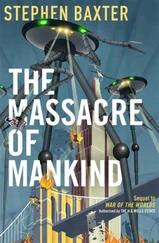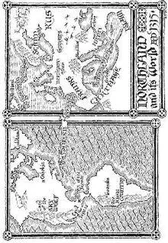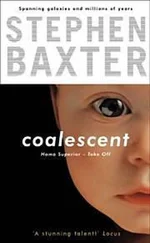When I thought back over the events of the day before — an exorcism, for God’s sake, the strange appearance of Alia, all that allusive gabble about the future — it seemed foolish, an indulgence, like the memory of a dinner party where the talk got out of hand. It seemed to me that morning that Alia’s future was a bright and shiny bubble that had somehow burst in my head overnight. And reality was responsibility: responsibility to my real work, the hydrate project.
So I went to work.
I grabbed some breakfast at Deadhorse’s one and only coffee shop, and made my way to the offices EI had set up in a small three-story block. I picked a cubicle, started up a softscreen with a tap of my fingernail, and put in a call to Shelley. While I waited for a reply I ran through my mail and other progress reports, trying to get a sense of where the project had gotten to while I had been absent in other realms.
Technically the project was going well. In a way the bombing had done us good; the heart of our prototype setup had been swept away, and Mark Two was proving to be a much sounder beast. We were starting to look further afield, too. We had started to talk to the Canadians about spreading our work out along their Arctic coast, and the Russian government had already given us permission to set up another pilot off the Siberian shore.
To obtain a mandate to roll out a global solution, it was the U.S. government, the UN, and the Stewardship agencies whose endorsement we really needed, of course. But once again poor, deluded Ben Cushman, our bomber, had probably done us long-term good. I thought that among the commentators and opinion formers a consensus was emerging that regardless of the environmental arguments, to allow our project to fail now would be a betrayal of Barnette, and of the others who had died.
That was all fine, but we still needed to make the case. And so we were starting to work with Gea’s sponsors toward a presentation to the UN. It would be given by Gea herself. Given the loss of Barnette, I couldn’t think of a better spokesperson for the cause. But it would be the first time an artificial sentience had addressed the UN General Assembly: quite an occasion. I wondered what form Gea would choose to incarnate herself. Presumably not my uncle George’s toy robot.
“How about like Alia?” I said to Shelley, when she at last came on the line. I had downloaded a record of our exorcism to her. “Perhaps an apelike post-human form would be a fitting symbol. All our futures are in the balance, et cetera.”
“Yes. And if things go wrong she could climb a pillar and swing out the window.” Shelley seemed to be multitasking: as she spoke to me she kept glancing aside, and I thought somebody just out of sight was passing her bits of paper as we spoke.
Shelley had been at her desk since six. She had always had those enviable reserves of energy, but since the loss of Ruud Makaay a vast burden of responsibility had fallen on her, and the lines around her eyes were disturbingly dark. “Hey, Michael,” she said, “I don’t want to hang up on you but we’re kind of rapid-responding here. Is there anything else you need from me right now?”
“I called to see what I could do for you.”
She eyed me; for a moment I had her full attention. “Look, Michael, we’re trying to ramp up to a production facility. We’re at a level of detail you can’t much help with. There’s always Gea’s speech; you could work on that, if you’re kicking your heels. But you have other stuff to sort out, don’t you?”
“You know me too well,” I groused.
“Maybe. I know you’re sometimes tempted to hide, just as you’re trying to hide right now in work that you don’t need to be doing. But this Alia came for you, didn’t she? I think you’re going to have to face that, and resolve it somehow, before you can move on.”
“I know.”
“Then get off the line and do it. Talk to you later, bye.” She turned away. “Now, where the hell are the results of that last deconvolution—” The image blanked out.
There was a call from John, waiting for my reply.
Shelley was right, of course. I tapped the screen, took John’s call, and immersed myself once more in strangeness.
John, Tom, and I gathered in another small office. As drab as everything else seemed to be in Deadhorse, it was empty save for a small conference table and chairs, and a few softscreens on the wall. John and Tom looked as washed-out as I felt.
We were alone save for Gea, who trundled back and forth on the tabletop, spitting sparks. Gea was going to give us some preliminary results from her scanning of Alia’s manifestation.
I spoke to John, who had called us together. “I take it you didn’t want Sonia here.”
“Tom agrees. This is a family thing, Michael. It’s all about us, about Morag. She was your wife, Tom’s mother—”
“Your lover.”
His face hardened, but he didn’t look away; for better or worse that awful truth was becoming embedded in the fabric of our relationship. “I know the future is mixed up in all this. Alia. ” He spoke the name like a curse. “But it’s about our lives, the three of us. So let’s try to start from that basis.”
“And Rosa?”
Tom rolled his eyes. “Let’s keep it down to Earth, shall we?”
Maybe he was right. Three Pooles was probably enough craziness for any one room. I turned to Gea. “So where do we start? What is Alia?”
Gea rolled complacently. “First, she wasn’t a VR. No doubt she was a projection of some sort, as she tried to explain to us. But equally she was real, as real as you are, Michael. Her body responded to our attempts to scan it, with X-rays, MRI, thermal imagers, other technologies. She shed strands of hair! With that we were even able to perform a genomic analysis.”
Gea said that Alia was human — almost.
As Rosa had guessed, that apelike form appeared to be an adaptation to zero gravity. A starship on a long-duration voyage was in an evolutionary sense like an island on Earth, where stranded animals routinely become dwarfs to spread out a limited food supply among more individuals. So the crew found their children growing smaller. And, in low or zero gravity, as the generations ticked by the children’s forms had reverted to an ancient apelike plan, with more of a balance of length between arms and legs — a design more suitable for climbing.
Surprisingly, Gea said, the basic body-plan changes seemed to be the result of natural selection rather than deliberate engineering. I’m no evolutionary biologist, but it seems there are some changes the genes find “easy” to make, such as relative growth rates, and faced with a challenging new environment, selection reaches for the easy options first. How strange, though, that these far-future people, projected into the unimaginable environment of space, had found their bodies reaching deep back in time for genetic memories of vanished African forest canopies.
“There is also some redesign of the joints,” Gea said. “For instance it looks as if Alia, like a baboon, could dangle from one arm and turn, allowing the arm to turn a full rotation in its socket.” But such redesign seemed radical for a “mere” half-million years, Gea said; perhaps this was an expression of engineered genes.
John grunted. “Next time you see her, throw her a banana and ask her to do some tricks.”
“Shut up,” I said mildly.
Gea talked us through more subtle changes, all of which pointed to an advancement over the Homo sapiens standard model circa the twenty-first century. The skeleton had been redesigned; Alia had more ribs than I did, perhaps to hold her organs in place more effectively, and so avoid hernias. Although she was designed for swinging around in weightlessness, Alia had thicker bones, vertebrae, discs in her back. She would be less prone to osteoporosis than I was, and would do a better job of functioning in high gravity, if she had to. Gea showed us images of a redesigned throat. Alia had no epiglottis, but there was a raised trachea, a kind of extension to her windpipe, so that food and drink could never get mixed up with the air she breathed; she was very unlikely to choke.
Читать дальше












